Սպիրու Կոստաքեի Հարեթ Spiru C. Haret
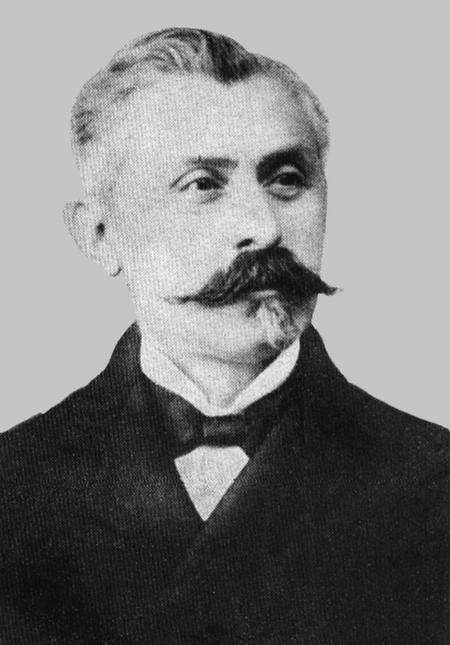
Սպիրու Կոստաքեի Հարեթ Spiru C. Haret
Romanian Armenian mathematician, astronomer and politician. He made a fundamental contribution to the n-body problem in celestial mechanics by proving that using a third degree approximation for the disturbing forces implies instability of the major axes of the orbits, and by introducing the concept of secular perturbations in relation to this. (Proved that planetary motion is not absolutely stable) As a politician, during his three terms as Minister of Education, Haret ran deep reforms, building the modern Romanian education system. He was made a full member of the Romanian Academy in 1892. He also founded the Astronomical observatory in Bucharest, The crater Haret on the Moon is named after him. The Spiru Haret University, a private university in Bucharest, Romania, bears the name of a scientist and reformer of the Romanian education.
Born 15 February 1851 in Iaşi, Moldavia to an Armenian family, He showed talent for mathematics at a very young age, publishing two textbooks, one in algebra and one in trigonometry when he was still in high school. Whilst in his second year studying physics and mathematics the in the University of Bucharest, he became a teacher of mathematics in Nifon Seminary.
After graduation, Haret won a scholarship competition organized by Titu Maiorescu and went to Paris in order to study mathematics at the Sorbonne. There he earned a mathematics diploma in 1875 and a physics diploma in 1876. Two years later he earned his Ph.D. by defending his thesis, Sur l’invariabilité des grandes axes des orbites planétaires (On the invariability of the major axis of planetary orbits), in front of examiners led by Victor Puiseux. In this work he proved a result fundamental for the n-body problem in astronomy, the thesis being published in Vol. XVIII of the Annales de l'Observatoire de Paris. Haret was the first Romanian to obtain a Ph.D. degree in Paris, (though he was of full Armenian descent)
After his return to Romania in 1878, Haret abandoned scientific research and dedicated the rest of his life to improving Romanian education, which was heavily underdeveloped at the time, both as professor and as politician. He only published an article on the secular acceleration of the Moon in 1880 and one on Jupiter’s Great Red Spot (1912). And in In 1910 he published Social mechanics, which used mathematics to explain social behaviour (somehow anticipating the fictional “psychohistory” branch of mathematics developed by Hari Seldon, the fictional character of Isaac Asimov‘s Foundation, published 40 years later).
He was appointed professor of rational mechanics at the Science Faculty in Bucharest. The next year Haret became a correspondent member of the Romanian Academy. He kept the professorship at the Science Faculty until his retirement in 1910. As Minister of Education he ran a complete reform, basically building the modern Romanian education system
More Posts from Astrotidbits-blog and Others
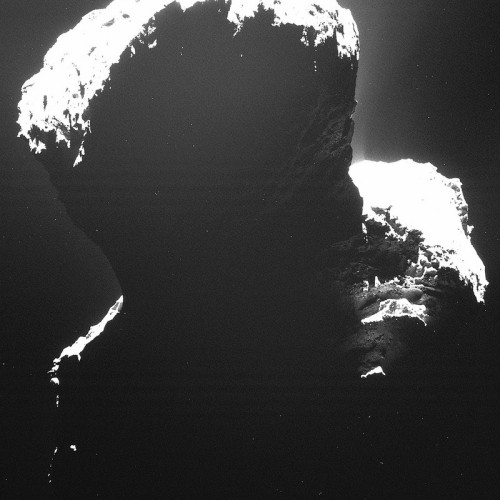
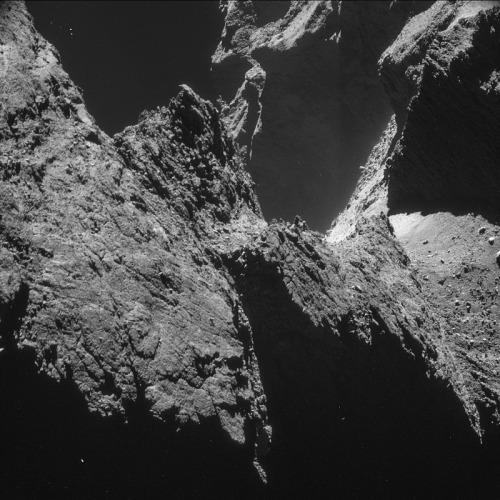
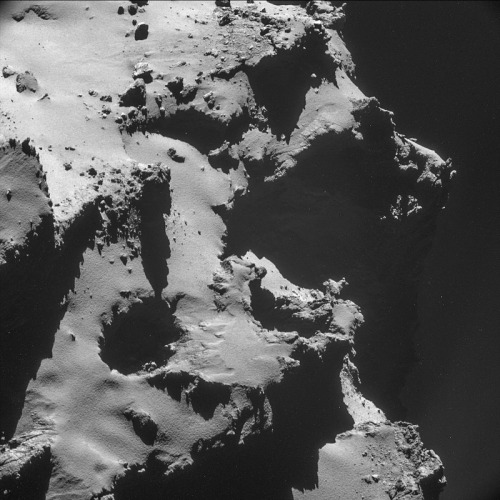
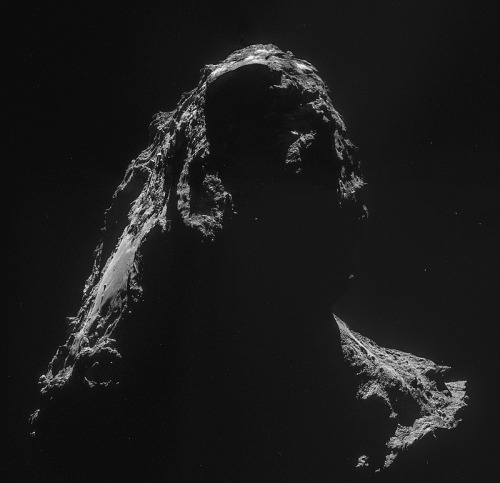
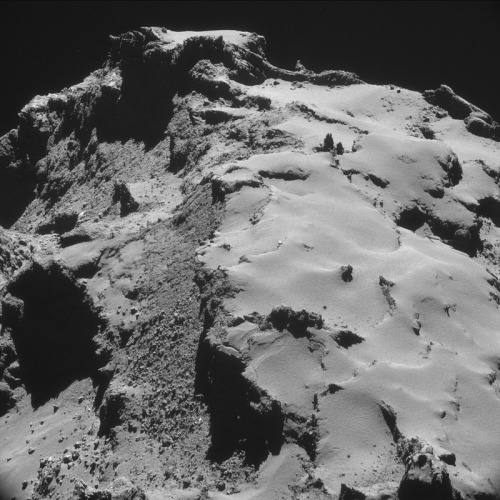
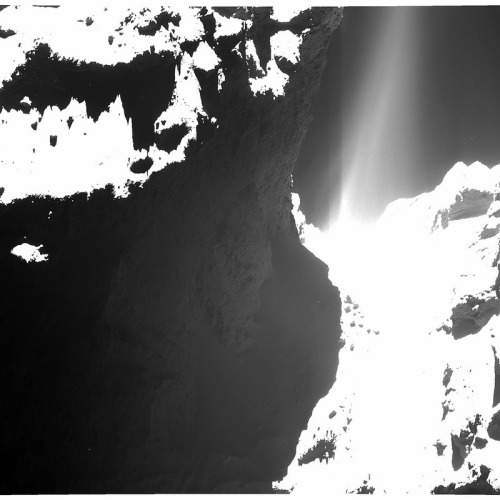
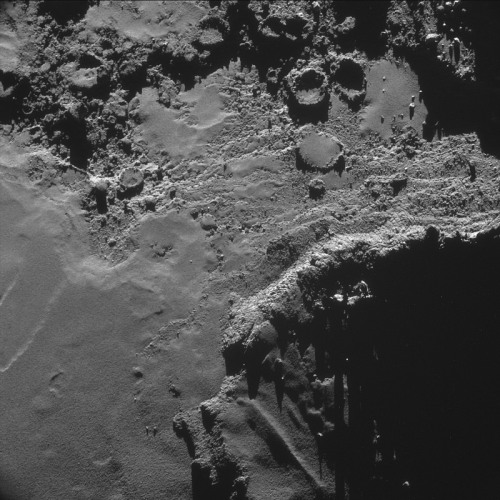
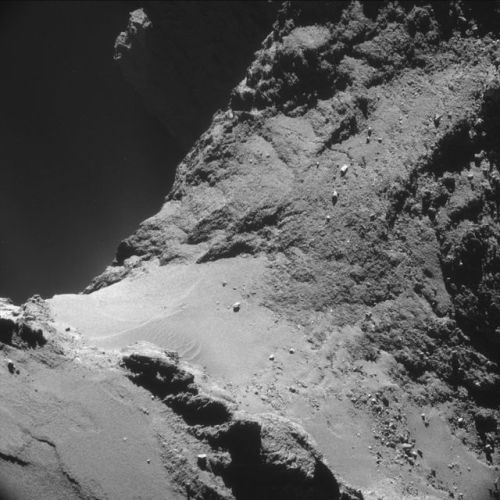
This is what a comet looks like, up close and personal.
PHOTOS FROM AN ALIEN WORLD.
I am so excited I can’t even. Source: ESA’s Flickr feed.
What’s Up for March 2017?
What’s Up for March? The moon hides red star Aldebaran and crescents dazzle after dusk.

On March 4 the first quarter moon passes between Earth and the star Aldebaran, temporarily blocking our view of the star. This is called an occultation.

The occultation begins and concludes at different times, depending on where you are when you view it.

The event should be easy to see from most of the U.S., Mexico, most of Central America, the Western Caribbean and Bermuda.

Observers along a narrow path from Vancouver, British Columbia, to Hartford, Connecticut, will see the moon “graze” the star. The star will disappear and reappear repeatedly as hills and valleys on the moon alternately obscure and reveal it.

As seen from Earth, both Mercury and Venus have phases like our moon. That’s because they circle the sun inside Earth’s orbit.

Planets that orbit between Earth and the sun are known as inner or inferior planets.

Inferior planets can never be at “opposition,” which is when the planet and the sun are on opposite sides of Earth.

But inferior planets can be at “conjunction,” which is when a planet, the sun and Earth are all in a straight line.

Conjunction can happen once when the planet is on the opposite side of the sun from Earth and again when it’s on the same side of the sun as Earth.

When a planet is on the opposite side of the sun from Earth, we say it is at “superior conjunction.” As the planet moves out from behind the sun and gets closer to Earth, we see less and less of the lit side. We see phases, similar to our moon’s phases.

Mercury is at superior conjunction on March 6.

A few weeks later, the planet emerges from behind the sun and we can once again observe it. By the end of March we’ll see a last-quarter Mercury.

On April 20 Mercury reaches “inferior conjunction.”

Brilliant Venus is also racing toward its own inferior conjunction on March 25. Watch its crescent get thinner and thinner as the planet’s size appears larger and larger, because it is getting closer to Earth.

Finally, look for Jupiter to rise in the East. It will be visible all month long from late evening until dawn.

You can catch up on solar system missions and all of our missions at www.nasa.gov
Watch the full “What’s Up for March 2017″ video here:
Make sure to follow us on Tumblr for your regular dose of space: http://nasa.tumblr.com

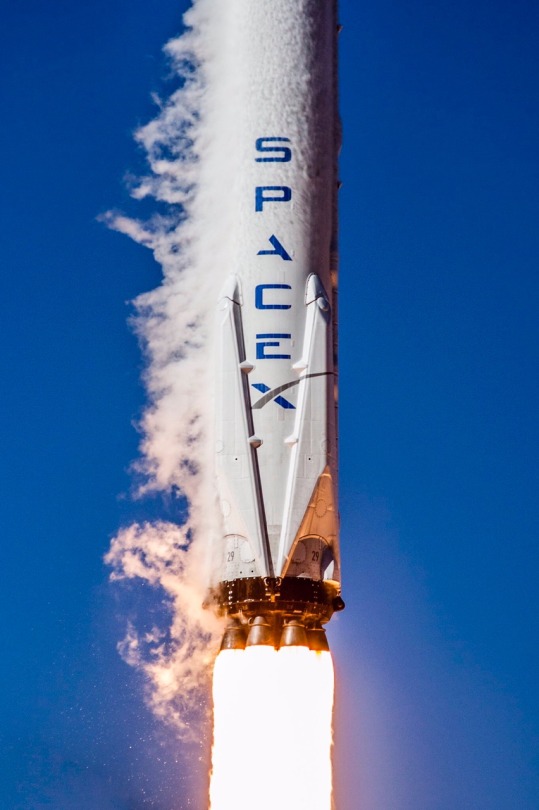
Experiment resolves mystery about wind flows on Jupiter
Using a spinning table and a massive garbage can, geophysicist leads team in simulating the planet’s atmosphere
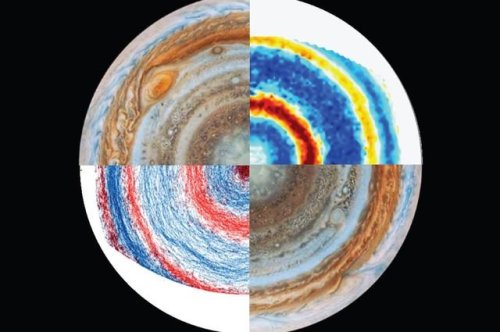
One mystery has been whether the jets exist only in the planet’s upper atmosphere – much like Earth’s own jet streams – or whether they plunge into Jupiter’s gaseous interior. If the latter is true, it could reveal clues about the planet’s interior structure and internal dynamics.
Now, UCLA geophysicist Jonathan Aurnou and collaborators in Marseille, France, have simulated Jupiter’s jets in the laboratory for the first time. Their work demonstrates that the winds likely extend thousands of miles below Jupiter’s visible atmosphere.
This research is published online in Nature Physics.
Keep reading



“JUNO PROBE MAKES HISTORY BY ENTERING JUPITER’S ORBIT AFTER FIVE-YEAR JOURNEY”
Last night, NASA and its Juno probe made history by entering a new probe in orbit around Jupiter. The Juno spacecraft, which had left Earth five years ago, finally entered Jovian orbit after a 35 minute rocket engine manoeuvre to slow down its approach to the planet and get caught by its gravity. Unlike other engine firings in the past, Juno’s manoeuvre was especially dangerous since no previous spacecraft had ever dared to pass so close to Jupiter; its intense radiation belts can destroy unprotected electronics. Luckily, since the probe was built like a tank with titanium shielding, a few minutes later, a sequence of tones transmitted from the spacecraft confirmed the braking manoeuvre had been a smashing success prompting wild cheering at NASA’s mission control in Pasadena, California. “All stations on Juno co-ord, we have the tone for burn cut-off on Delta B,” Juno Mission Control had announced. “Roger Juno, welcome to Jupiter.” Juno’s main objective is to sense Jupiter’s structure and chemistry to gather clues on how the gas giant formed some four-and-a-half-billion years ago. However, much of this observation will not take place until mid-October when Juno performs a second rocket engine burn to tighten its orbit to just 14 days. By then, Juno will be able to answer some interesting questions about the planet including where it formed in the early Solar System and whether Jupiter has a solid core or a core made of compressed gas. After the mission ends, Juno is scheduled to dive into Jupiter’s atmosphere in February 2018 to ensure that there is no possibility of it crashing into and contaminating any of Jupiter’s large moons.
Read more about this fascinating story on: http://www.bbc.com/news/science-environment-36710768
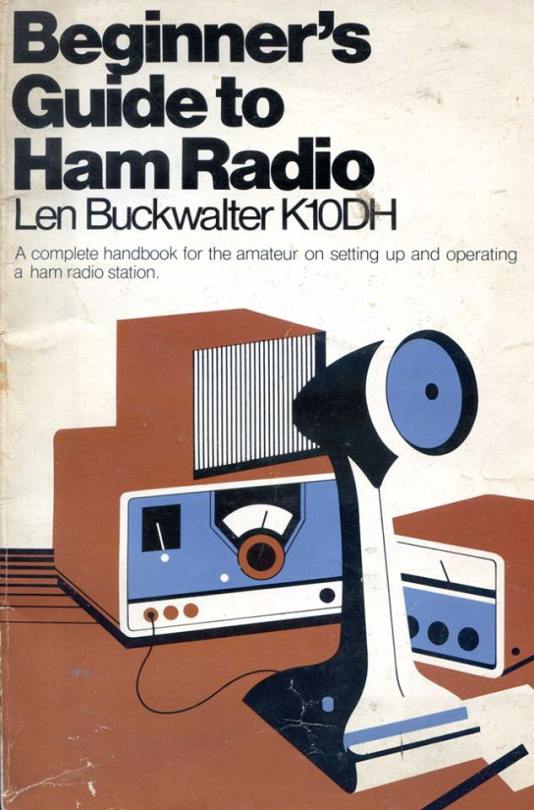
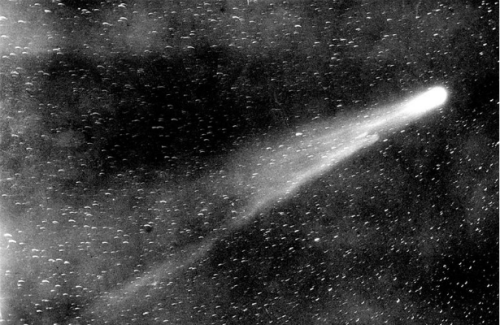
How I Discovered Halley’s Comet, by Edmond Halley
On Monday, June 10, in the Evening, the Sky being very serene and calm, I was desirous to take a view of the disk of Mars (then very near the Earth, and appearing very glorious) to see if I could distinguish in my 24 Foot Telescope, the Spots said to be seen on him. Directing my Tube for the purpose, I accidentally fell upon a small whitish Appearance near the Planet, resembling in all respects such a Nebula … The Reverend Mr. Miles Williams, Mr. Alban Thomas, and myself contemplated this Appearance for above an Hour … and we could not be deceiv’d as to its Reality; but the slowness of its Motion made us at that time conclude that it had none, and that it was rather a Nebula than a Comet.
Read more. [Image: Wikimedia Commons]
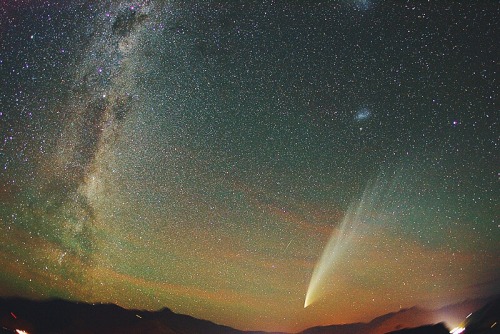
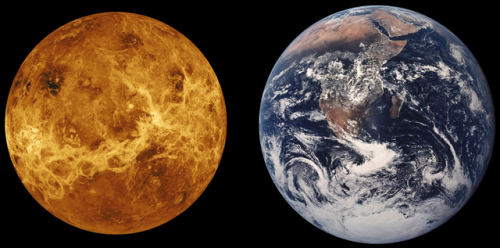
The second closest planet to the sun, Venus. Venus is about the same size as Earth, having a 12,104 km diameter. Venus has phases, like our moon, that can be seen as a crescent to a full circle. When visible at dusk and dawn, Venus is the brightest shining object in the sky (besides the sun & moon of course), brighter than mercury and mars. It is the hottest planet, and it’s surface temperature can reach up to 470 degrees Celsius. This is because Venus traps the sun’s heat, unlike mercury which doesn’t. A day on Venus lasts longer than its year, lasting for 19 days over. Venus is definitely a planet we could explore more, we just need to find a way to combat the blistering heat! ☀️
-
 indaydreamsss reblogged this · 4 years ago
indaydreamsss reblogged this · 4 years ago -
 indaydreamsss liked this · 4 years ago
indaydreamsss liked this · 4 years ago -
 nowscher reblogged this · 4 years ago
nowscher reblogged this · 4 years ago -
 pauvrecamille reblogged this · 4 years ago
pauvrecamille reblogged this · 4 years ago -
 martian-night reblogged this · 4 years ago
martian-night reblogged this · 4 years ago -
 defect-defect reblogged this · 4 years ago
defect-defect reblogged this · 4 years ago -
 defect-defect liked this · 4 years ago
defect-defect liked this · 4 years ago -
 sapokanikan liked this · 4 years ago
sapokanikan liked this · 4 years ago -
 feel-it-in-my-youth liked this · 5 years ago
feel-it-in-my-youth liked this · 5 years ago -
 ultraeverlastinggopstopper liked this · 7 years ago
ultraeverlastinggopstopper liked this · 7 years ago -
 astrotidbits-blog reblogged this · 8 years ago
astrotidbits-blog reblogged this · 8 years ago -
 astrotidbits-blog liked this · 8 years ago
astrotidbits-blog liked this · 8 years ago -
 timallenphoto liked this · 8 years ago
timallenphoto liked this · 8 years ago -
 alternatie liked this · 8 years ago
alternatie liked this · 8 years ago -
 historylovershere reblogged this · 8 years ago
historylovershere reblogged this · 8 years ago -
 peacocksandsnakes liked this · 9 years ago
peacocksandsnakes liked this · 9 years ago -
 historyisalwayschanging liked this · 10 years ago
historyisalwayschanging liked this · 10 years ago -
 hyemblog liked this · 10 years ago
hyemblog liked this · 10 years ago -
 bipolarhamlet liked this · 10 years ago
bipolarhamlet liked this · 10 years ago -
 kittycandydarling liked this · 10 years ago
kittycandydarling liked this · 10 years ago -
 jesuslovesme333 liked this · 10 years ago
jesuslovesme333 liked this · 10 years ago -
 marilyhearts reblogged this · 10 years ago
marilyhearts reblogged this · 10 years ago -
 accdtlbaby liked this · 10 years ago
accdtlbaby liked this · 10 years ago -
 waxedpaperdoor reblogged this · 10 years ago
waxedpaperdoor reblogged this · 10 years ago -
 imaginaryfriendschat reblogged this · 10 years ago
imaginaryfriendschat reblogged this · 10 years ago -
 kazerman reblogged this · 10 years ago
kazerman reblogged this · 10 years ago -
 sarsargoth liked this · 10 years ago
sarsargoth liked this · 10 years ago -
 hobo-feet reblogged this · 10 years ago
hobo-feet reblogged this · 10 years ago -
 skarlatywalentina liked this · 10 years ago
skarlatywalentina liked this · 10 years ago -
 lostinparadise liked this · 10 years ago
lostinparadise liked this · 10 years ago -
 crimelords liked this · 10 years ago
crimelords liked this · 10 years ago -
 negeltia liked this · 10 years ago
negeltia liked this · 10 years ago -
 allied-hero liked this · 10 years ago
allied-hero liked this · 10 years ago -
 akta-dej reblogged this · 10 years ago
akta-dej reblogged this · 10 years ago -
 akta-dej liked this · 10 years ago
akta-dej liked this · 10 years ago -
 cassafrass115 liked this · 10 years ago
cassafrass115 liked this · 10 years ago -
 canigetstorecredit liked this · 10 years ago
canigetstorecredit liked this · 10 years ago